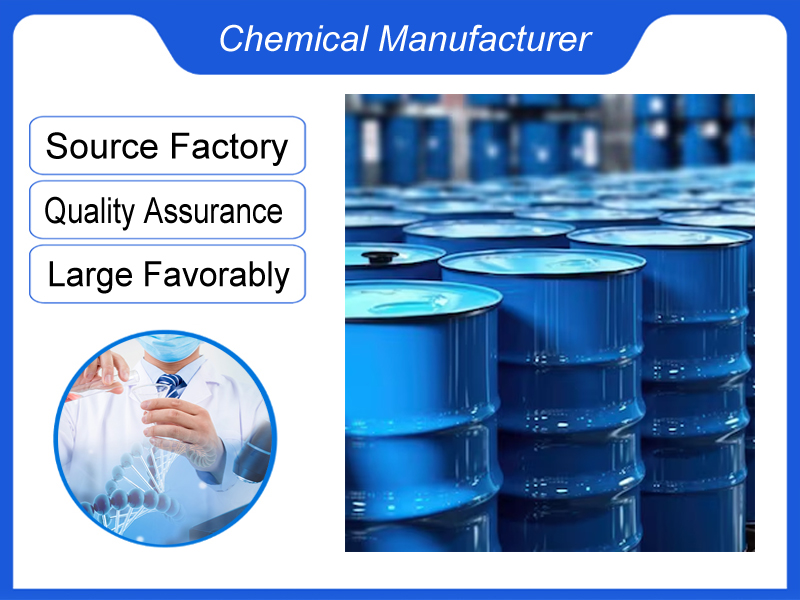
triclosan
We are a manufacturer based in China. We specialize in providing high-quality triclosan for industrial clients across various sectors. Whether you need chemicals consultation or technical support, our team is here to help.
Category:Paint chemicals Own Brand:MT /MOQ:100KG /From China/ B2B only.
Introduction
C12H7Cl3O2
3380-34-5
Uses
Therapeutic personal care products and cosmetics
Oral Sterilization Products
Names and Identifiers
| Name | Triclosan |
| Synonyms | THDP TCCP DP300 DP 300 NM 100 ch3565 SterZac Oletron Irgasan CH 3635 CH 3565 TROX-100 Sapoderm Yujiexin Aquasept Microban Triclosan ZilesanUW TRICLOSAN Cansan TCH Cloxifenol Microban B Zilesan UW Irgacare MP Irgacare-MP irgasandp300 Irgasan PG 60 Sanitized XTX Irgasan PE 30 Irgacide LP 10 Irgasan DP 400 Tinosan AM 100 Tinosan AM 110 Irgasan DP 3000 Irgasan CH 3565 Bacti-Stat soap Vinyzene DP 7000 Irgaguard B 1325 Irgaguard B 1000 Ultra-Fresh NM-V 2 Ultra-Fresh NM 100 Dp300 (Triclosan) Microban Additive B trichloro-2′-hydroxydiphenylether 5-Chloro-2-(2,4-dichlorophenoxy) phen 3-Chloro-6-(2,4-dichlorophenoxy)phenol 5-chloro-2-(2,4-dichlorophenoxy)-pheno 2′-hydroxy-2,4,4′-trichloro-phenylethe 2′-hydroxy-2,4,4′-trichloro-phenylethe 5-Chloro-2-(2,4-dichlorophenoxy)phenol 2,4,4-Trichloro-2-hydroxydiphenyl ether 2,4,4-TRICHLORO-2-HYDROXYDIPHENYL ETHER Phenol,5-chloro-2-(2,4-dichlorophenoxy)- 2′,4′,4-Trichloro-2-hydroxydiphenylether 2′,4,4′-Trichloro-2-hydroxydiphenyl ether 2′-Hydroxy-2,4,4′-trichlorodiphenyl ether 2,4,4′-Trichloro-2′-hydroxydiphenyl ether 2,4,4′-TRICHLORO-2′-HYDROXYDIPHENYL ETHER ether,2′-hydroxy-2,4,4′-trichlorodiphenyl 2-Hydroxy-2′,4,4′-trichlorodiphenyl ether 2,4,4′-Trichloro-2′-hydroxyldiphenyl ether 2,4,4′-Trichlorine-2′-Hydroxyl Diphenyl Ethyl 2,4,4′-Trichlorine-2′-Hydroxyl Diphenyl Ether 2,2′-Oxybis(1′,5′-dichlorophenyl-5-chlorophenol) 4-Chloro-2-hydroxyphenyl2,4-dichlorophenyl ether 2,4,4-trichloro-2-hydroxydiphenylether(irgasandp-300) 5-chloro-2-(2,4-dichlorophenoxy)-pheno2,4,4-trichloro-2-hydroxydiphenylether(irgasandp-300) |
| CAS | 3380-34-5 88032-08-0 |
| EINECS | 222-182-2 |
| InChI | InChI=1/2C12H7Cl3O2/c2*13-7-1-3-11(9(15)5-7)17-12-4-2-8(14)6-10(12)16/h2*1-6,16H |
| InChIKey | XEFQLINVKFYRCS-UHFFFAOYSA-N |
3380-34-5 – Physico-chemical Properties
| Molecular Formula | C12H7Cl3O2 |
| Molar Mass | 289.54 |
| Density | 1.4214 (rough estimate) |
| Melting Point | 56-60°C(lit.) |
| Boling Point | 290°C(lit.) |
| Flash Point | 313.7°C |
| Water Solubility | Soluble in ethanol, methanol, diethyl ether and sodium hydroxide solution (1M). Slightly soluble in water. |
| Solubility | H2O: soluble12g/L at 20°C |
| Vapor Presure | 0.001Pa at 25℃ |
| Appearance | Solid |
| Color | colorless or white |
| Merck | 14,9657 |
| BRN | 2057142 |
| pKa | 7.9(at 25℃) |
| Storage Condition | 2-8°C |
| Stability | Stable. Incompatible with strong oxidizing agents. |
| Refractive Index | 1.4521 (estimate) |
| MDL | MFCD00800992 |
| Physical and Chemical Properties | Melting point 56-60°C |
| Use | It is used for the production of high-grade daily chemical products, the preparation of medical and food industry equipment disinfectant, fabric antibacterial and deodorant finishing agent, etc. |
3380-34-5 – Risk and Safety
| Risk Codes | R36/38 – Irritating to eyes and skin. R50/53 – Very toxic to aquatic organisms, may cause long-term adverse effects in the aquatic environment. R36/37/38 – Irritating to eyes, respiratory system and skin. |
| Safety Description | S26 – In case of contact with eyes, rinse immediately with plenty of water and seek medical advice. S39 – Wear eye / face protection. S46 – If swallowed, seek medical advice immediately and show this container or label. S60 – This material and its container must be disposed of as hazardous waste. S61 – Avoid release to the environment. Refer to special instructions / safety data sheets. S24/25 – Avoid contact with skin and eyes. S22 – Do not breathe dust. S36 – Wear suitable protective clothing. |
| UN IDs | UN 3077 9/PG 3 |
| WGK Germany | 2 |
| RTECS | KO1100000 |
| TSCA | Yes |
| HS Code | 29095000 |
| Hazard Class | 9 |
| Packing Group | III |
| Toxicity | LD50 orl-rat: 3700 mg/kg 26UZAB 6,245,68/70 |
3380-34-5 – Upstream Downstream Industry
| Raw Materials | 2,4-Dichlorophenol Potassium hydroxide |
Reference Information
| LogP | 4.9 at 20℃ |
| properties | properties of triclosan: 1. properties: white crystalline powder with slightly aromatic taste or microphenolic compound smell; 2. solubility: slightly soluble in water, moderately soluble in dilute alkali, soluble in organic solvents such as ethanol and acetone, and can be dissolved in surfactants to form transparent concentrated liquid products; 3. Stability: it has excellent storage stability: it will not decompose rapidly below 280-290 ℃; When heated at 200 ℃ for 14 hours, only 2% of the active substance decomposes, even under long-term ultraviolet light irradiation, only slightly decomposes. Its solution is stable to acid and alkali. 4. Volatility: Very low volatility, slightly aromatic. |
| introduction | triclosan is an internationally popular external efficient and safe antibacterial disinfectant, which can kill staphylococcus aureus, e. coli and white nianqiu on the world stage and has disinfection effect on pyogenic cocci and intestinal pathogenic fungi. |
| disinfectant | triclosan is a high-efficiency broad-spectrum antibacterial disinfectant for external use, also known as dichlorophenoxychlorophenol, trichlorochlorophenol, triclosan, bacteriostatic pure, Wei jiemixin, triclosan, normally white or off-white crystalline powder with slight phenol odor. Insoluble in water, easily soluble in lye and organic solvents. It has stable chemical properties, temperature resistance, acid and alkali hydrolysis resistance, and does not cause any toxic symptoms and environmental pollution. It is an internationally recognized variety of special fungicides. It can kill bacteria such as Staphylococcus aureus, Escherichia coli and fungi such as Candida albicans. It also has an inhibitory effect on viruses (such as hepatitis B virus, etc.) and can protect beneficial bacteria. The bactericidal mechanism of triclosan is to first adsorb on the bacterial cell wall, then penetrate the cell wall, react with lipids and proteins in the cytoplasm, cause protein denaturation, and then kill bacteria. At present, it has been widely used in high-efficiency medicinal soaps (sanitary soap, sanitary lotion), axillary odor removal (foot aerosol), hand sanitizer, wound disinfection spray, medical device disinfectant, sanitary facial cleanser (cream), Air fresheners and refrigerator deodorants and other daily chemicals are also used for the finishing of sanitary fabrics and the antiseptic treatment of plastics. High-purity ones can be used for the treatment of gingivitis, periodontitis and oral ulcers. In toothpaste and mouthwash. The state stipulates that the content shall not exceed 0.3%. |
| carcinogenicity | In 2004, a teacher (Dr. Peter Vikesland) of Virginia Tech University found in an experiment that products containing triclosan react with chlorine-containing tap water to form a substance called “Ge Luofang”, that is, chloroform, chemically called chloroform, chloroform, it is a colorless, volatile, and special sweet liquid. It will oxidize to form hydrogen chloride and phosgene when exposed to light. Has been used as an anesthetic. Animal experiments have found that this substance can cause damage to the heart and liver, has mild teratogenicity, and can induce liver cancer in mice, but there is no research data on human carcinogenesis. To be on the safe side, both the International Cancer Research Center and the United States have listed chloroform as a suspected carcinogen that poses a potential threat to the human body. |
| toothpaste standard | the national standard for toothpaste used in China is the new national standard for toothpaste (GB8372-2008) implemented from February 1, 2009. Compared with the 2001 version of the toothpaste standard, the new national standard has been increased and adjusted in many aspects. In the new national standard for toothpaste, nearly 1500 kinds of ingredients are prohibited or strictly restricted, including diethylene glycol, triclosan, etc. The regulation for diethylene glycol is not allowed to be artificially added to raw materials. If it is brought in as impurity, the content in toothpaste shall not exceed 0.1%. Triclosan is included in the permitted preservatives, but it is clear that it shall not exceed 0.3%. The new national standard stipulates the fluorine content of adult fluoride toothpaste as 0.04%-0.15%, and stipulates that the fluorine content of children’s fluoride toothpaste should be between 0.05% and 0.11%. |
| application | triclosan can be used in the following products: high-efficiency disinfectant soap or medicinal soap; Antibacterial soap, deodorizing soap and sanitary soap; Sanitary bath lotion and antibacterial liquid detergent; Antibacterial tableware detergent; Antibacterial fabric detergent; Products in addition to underarm odor or beriberi; Sanitary facial cleanser and antibacterial skin care cream; Disinfecting hand sanitizer; Disinfectant for medical devices; Wound disinfectant; air freshener and refrigerator deodorant; fabric antibacterial finishing agent. |
| uses | preservatives and antifungal agents, used in cosmetics, emulsions and resins, and also used to make disinfectant soaps. The oral LD50 of this product in mice is 4g/kg. Used in the production of high-grade daily chemical products, medical and dietary industry equipment disinfectants, fabric antibacterial and deodorant finishing agent preparation, etc. Triclosan (Irgasan) is a broad-spectrum antibacterial agent, which inhibits bacteria and Plasmodium Type II fatty acid synthase (FAS-II), also inhibits mammalian fatty acid synthase (FASN), and may also have anti-cancer activity. |
| production method | (1) using 2,4-dichlorophenol as raw material, 2,4 dichlorophenol reacts with potassium hydroxide to produce potassium dichlorophenol. Then react with 2,5-dichloronitrobenzene under the catalysis of copper powder to obtain 2,4,4 ‘-trichloro-2’-nitrodiphenyl ether. Then iron powder is reduced to generate 2,4,4 ‘-trichloro-2′-aminodiphenyl ether, and then diazotized to obtain the product. (2) Using o-methoxyphenol as raw material, potassium hydroxide powder and o-methoxyphenol (guaiacol), the reaction of o-methoxyphenol potassium salt. React methoxydiphenyl ether with bromobenzene and pass chlorine to chlorinate to prepare 2,4,4’-trichloro-2 ‘-methoxydiphenyl ether. Hydrolysis using AICI3 as catalyst to produce 2,4,4 ‘-trichloro-2’-hydroxydiphenyl ether. |
If you're ready to take the next step, Leave your message below and we’ll reply soon. 20+ years of chemical manufacturing & export experience, a partner you can trust.





